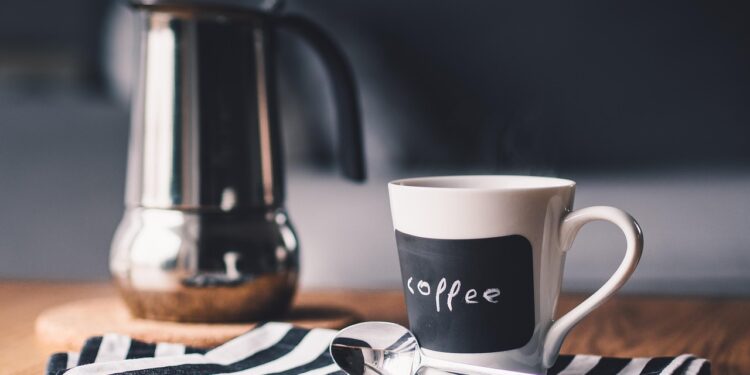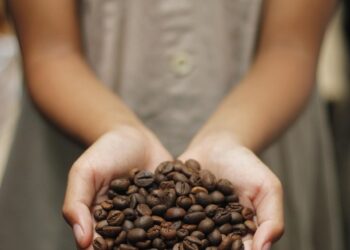Exploring Coffee Origins: A Beginner’s Guide to Beans and Brews
Coffee, a beloved beverage enjoyed by millions worldwide, boasts a rich history and diverse profiles that vary significantly based on origin, roasting, and brewing methods. If you’re new to the coffee world or looking to deepen your understanding, this guide will walk you through the essentials of coffee beans and brews, providing you with a foundation to appreciate and explore this complex and aromatic universe.
The Journey From Bean to Cup
The coffee journey begins with two primary types of coffee beans: Arabica and Robusta. Arabica beans are renowned for their sweet, complex flavor profiles and are predominantly grown in Latin America, Africa, and Asia. Conversely, Robusta beans are known for their bold, robust flavors, containing nearly twice the caffeine of Arabica beans and are primarily cultivated in Africa and Indonesia.
Understanding the origin and characteristics of these beans is crucial as they significantly influence the taste and quality of your coffee.
Key Coffee Producing Regions
The flavor of coffee is profoundly affected by the region where it’s grown. Elevation, climate, and soil type all play vital roles in creating the unique tastes of coffee from different territories.
Latin America
Countries like Brazil, Colombia, and Costa Rica are famous for their vast coffee plantations. Latin American coffees are often smooth and balanced, with chocolate and nutty nuances, making them highly popular among global coffee drinkers.
Africa
African coffees, particularly those from Ethiopia and Kenya, are highly prized for their floral and fruity notes, exhibiting complexity in acidity and aroma.
Asia
Asian countries, especially Vietnam and Indonesia, produce predominantly Robusta beans which are ideal for those who enjoy a strong, intense cup of coffee.
Processing Methods Impacting Coffee Flavor
The process that coffee beans undergo after harvesting affects their taste profiles. The main methods include:
- Washed (Wet) Process: Beans are stripped of their fruit and mucilage and then fermented to remove the slick layer of mucilage before drying.
- Natural (Dry) Process: Whole coffee cherries are dried in the sun before the beans are extracted. This method often produces a sweeter, more fruity character.
- Honey Process: Beans are dried with some or all of the mucilage remaining, impacting the sweetness and body of the coffee.
Choosing a coffee based on its processing method can enhance your brewing experience, aligning the coffee’s intrinsic qualities with your taste preferences.
Roasting: Bringing Out the Flavor
Roasting is where the magic happens, transforming green coffee into the aromatic brown beans that we are familiar with. The roast level can range from light to dark:
- Light Roast: Offers a milder flavor and pronounced acidic tones, retaining the original character of the bean.
- Medium Roast: Features a more balanced flavor, acidity, and aroma, often preferred in the United States.
- Dark Roast: Produces stronger, bolder flavors with less acidity, preferred for espresso blends.
The choice of roast impacts not only the taste but also how the coffee behaves during brewing, which leads us to the next critical aspect: the brewing method.
Exploring Brewing Techniques
The world of coffee brewing is as diverse as it is innovative, offering numerous methods to extract the different flavors and aromas from the beans:
- Drip or Pour-Over: Yields a clean, clear cup of coffee focusing on the delicate flavors.
- French Press: Allows for a full extraction, resulting in a rich and robust brew.
- Espresso: An intense, concentrated method that extracts deep flavors and creamy body.
- Cold Brew: Steeps coffee grounds in cold water over a long period, reducing acidity and enhancing smoothness and sweetness.
Experimenting with various brewing techniques can significantly influence your coffee’s flavor profile, providing diverse and enriching experiences with each cup.
Tips for Buying and Storing Coffee
To enjoy the freshest and most flavorful coffee, consider these tips:
- Buy whole beans over pre-ground coffee to maintain freshness.
- Look for beans that were roasted within the past two weeks.
- Store coffee in a cool, dark place in an airtight container to preserve its qualities.
Conclusion
Coffee is as much an art as it is a science. From understanding the origins and processing methods to mastering different brewing techniques and storage tips, each element plays a crucial role in the final taste of your brew. By deepening your knowledge of coffee’s key aspects, you empower yourself to make more informed choices, ultimately leading to a more satisfying coffee experience. Start exploring the fascinating world of coffee today and discover your preferred bean and brew style!
FAQ Section
What is the best coffee bean in the world?
The answer varies depending on personal preferences, but many coffee connoisseurs praise Arabica beans from Ethiopia for their unique, fruity, and floral notes.
How do I choose the right coffee roast?
Consider your flavor preference: if you enjoy a lighter, more acidic coffee, go for a light roast; if you prefer a balanced cup, choose a medium roast; and for a bolder, richer taste, select a dark roast.
Can I brew espresso from any coffee bean?
While you can technically make espresso from any coffee bean, beans roasted specifically for espresso usually provide better results due to their balanced flavor and solubility.





